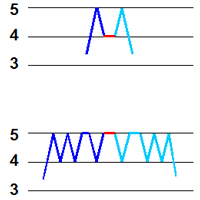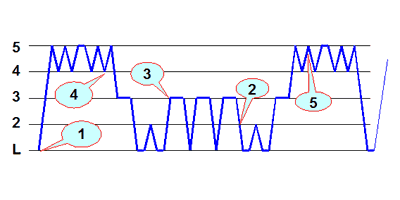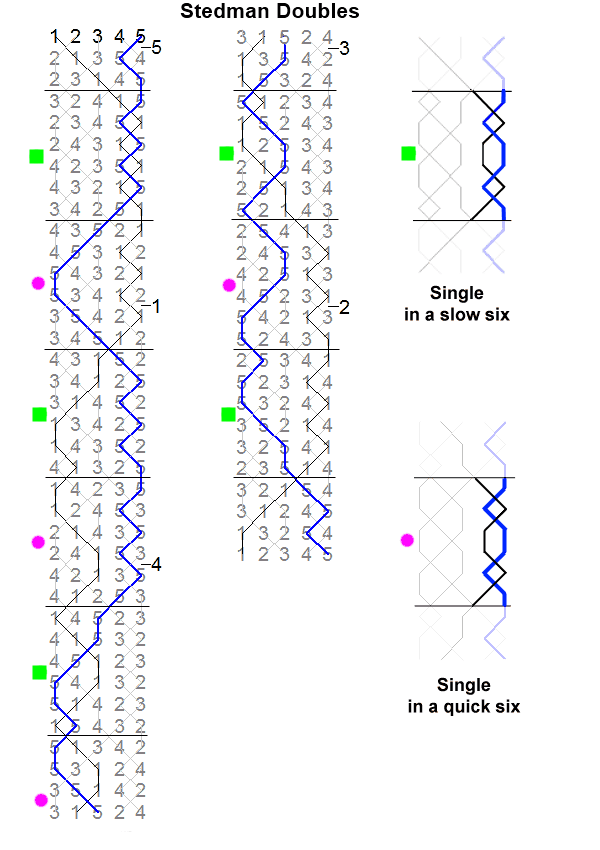Work at a Single in Stedman Doubles
In Stedman doubles there is no Bob only a Single which only affects the bells in 4&5 Places. This is very different from Stedman at higher stages (Triples, Caters and Cinques) as these have both Bobs and Singles that are called at a different position in the six.
There are subtle differences whether the Single is called in a Quick or Slow six. It is not necessary to worry which type it is, but are described here for completeness. If you have gone out quick and make cats ears because the call came in a slow six, the two places in 4ths between the ears will be over the same bell, but not if you went out slow. In a quick six, the bell making anti-cats ears will notice the bell they made their 45 Up with before the Single, returns after the anti-ears for their 45 Down and acts as a reminder to go in quick.
Note: The Single should be called at the backstroke (the underscored place in the table below), but some conductors wrongly call it a blow later at handstroke as they might in triples.
| |
Doing this |
Single called |
Quick or Slow |
 |
First dodge of 4/5 Up
454545.. |
Cat's Ears
4544543..
Lie in 4ths place, then a last dodge of 45 Down and in |
In the same way as you came out |
First dodge of 4/5 Down
545454.. |
Anti Cat's Ears
5455455454543..
Lie in 5ths place, then a last dodge of 45 Up, do your 45 Down then in |
In the same way as you came out |


